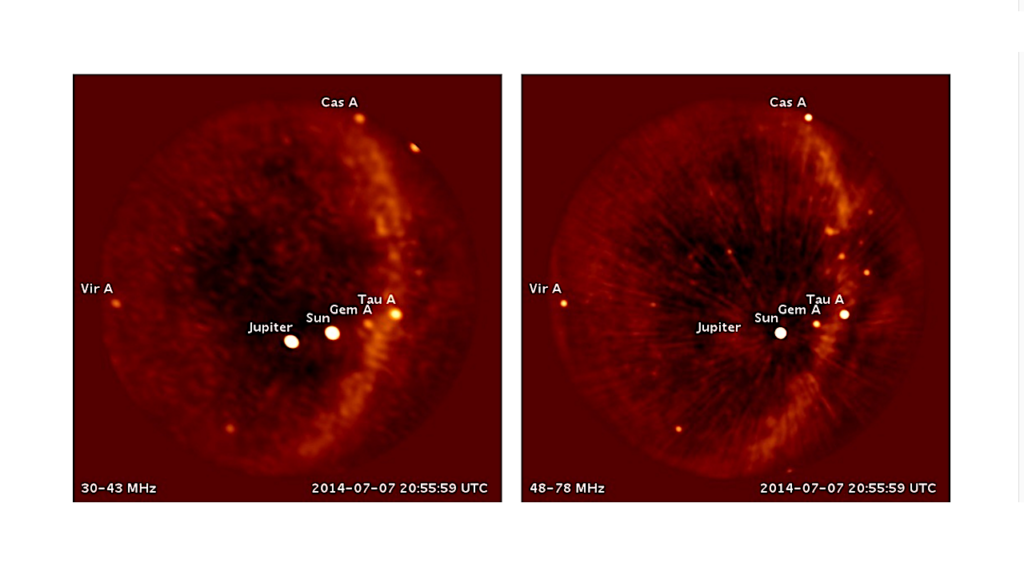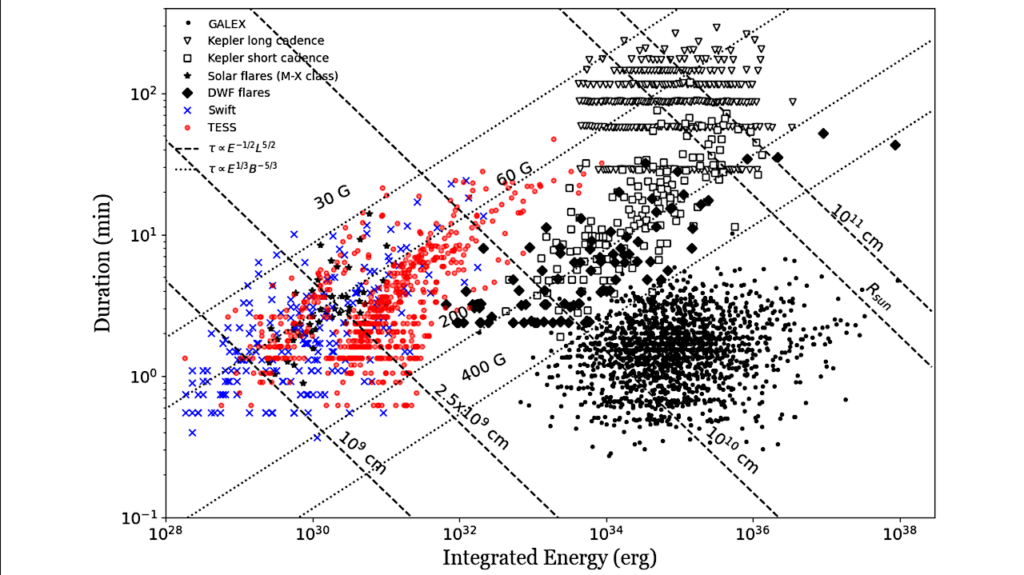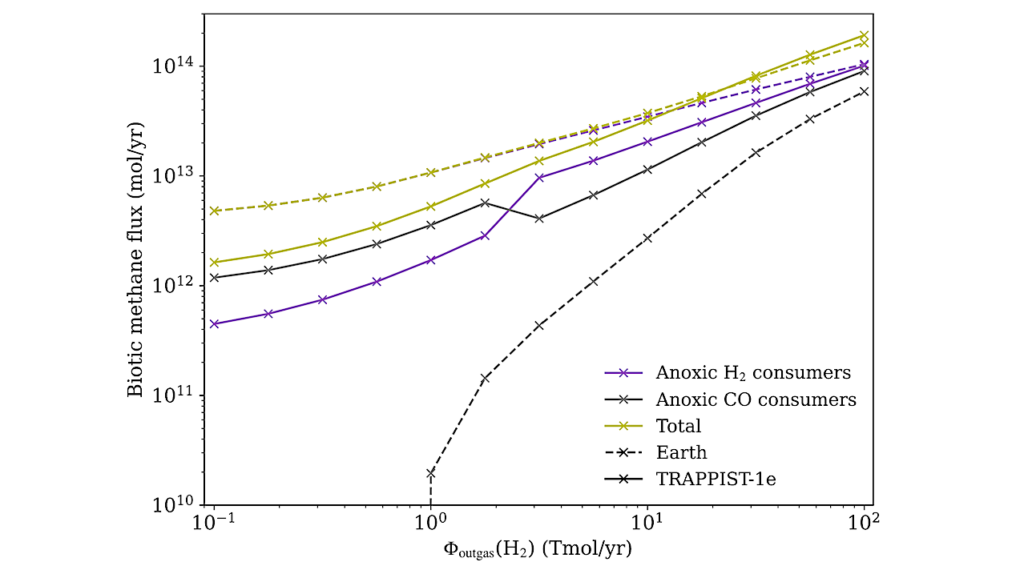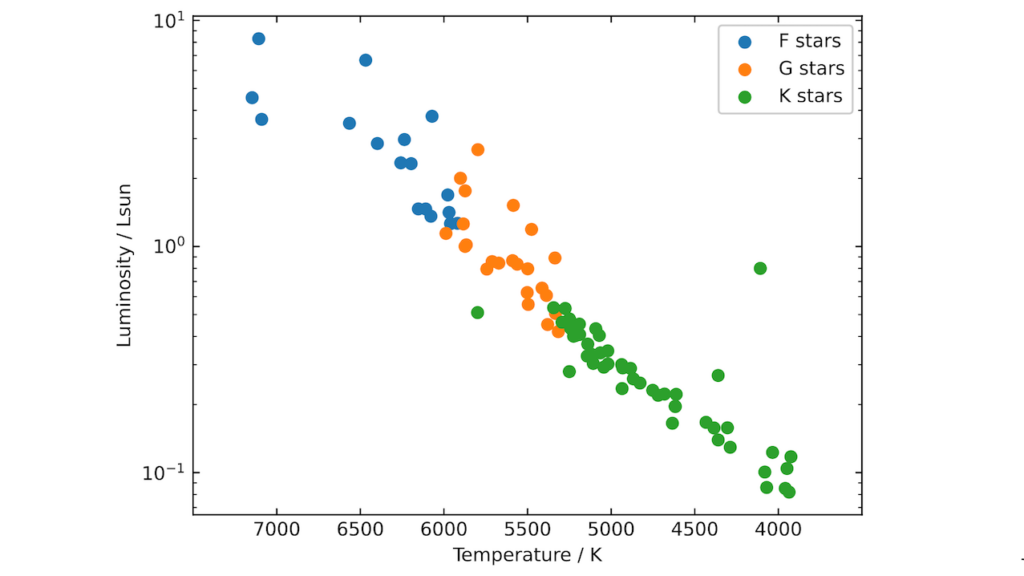Photochemistry and Spectral Characterization of Temperate and Gas-Rich Exoplanets

Exoplanets that receive stellar irradiance of approximately Earth’s or less have been discovered and many are suitable for spectral characterization.
Here we focus on the temperate planets that have massive H2-dominated atmospheres, and trace the chemical reactions and transport following the photodissociation of H2O, CH4, NH3, and H2S, with K2-18 b, PH2 b, and Kepler-167 e representing temperate/cold planets around M and G/K stars.
We find that NH3 is likely depleted by photodissociation to the cloud deck on planets around G/K stars but remains intact in the middle atmosphere of planets around M stars. A common phenomenon on temperate planets is that the photodissociation of NH3 in presence of CH4 results in HCN as the main photochemical product.
The photodissociation of CH4 together with H2O leads to CO and CO2, and the synthesis of hydrocarbon is suppressed. Temperate planets with super-solar atmospheric metallicity and appreciable internal heat may have additional CO and CO2 from the interior and less NH3 and thus less HCN.
Our models of K2-18 b can explain the transmission spectrum measured by Hubble, and indicate that future observations in 0.5-5.0 um would provide the sensitivity to detect the equilibrium gases CH4, H2O, and NH3, the photochemical gas HCN, as well as CO2 in some cases.
Temperate and H2-rich exoplanets are thus laboratories of atmospheric chemistry that operate in regimes not found in the Solar System, and spectral characterization of these planets in transit or reflected starlight promises to greatly expand the types of molecules detected in exoplanet atmospheres.
Renyu Hu
Comments: Accepted by ApJ
Subjects: Earth and Planetary Astrophysics (astro-ph.EP)
Cite as: arXiv:2108.04419 [astro-ph.EP] (or arXiv:2108.04419v1 [astro-ph.EP] for this version)
Submission history
From: Renyu Hu
[v1] Tue, 10 Aug 2021 02:59:45 UTC (1,074 KB)
https://arxiv.org/abs/2108.04419
Astrobiology








